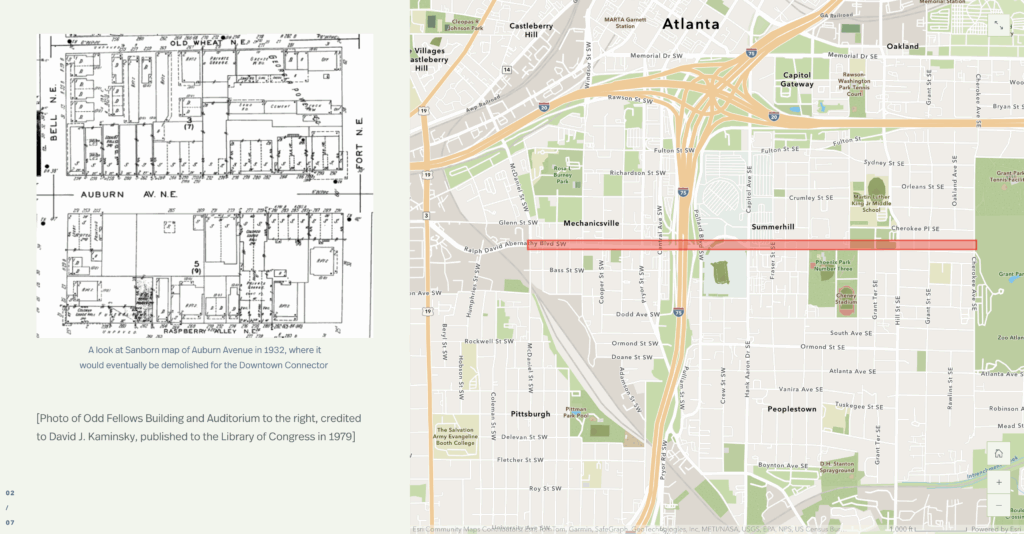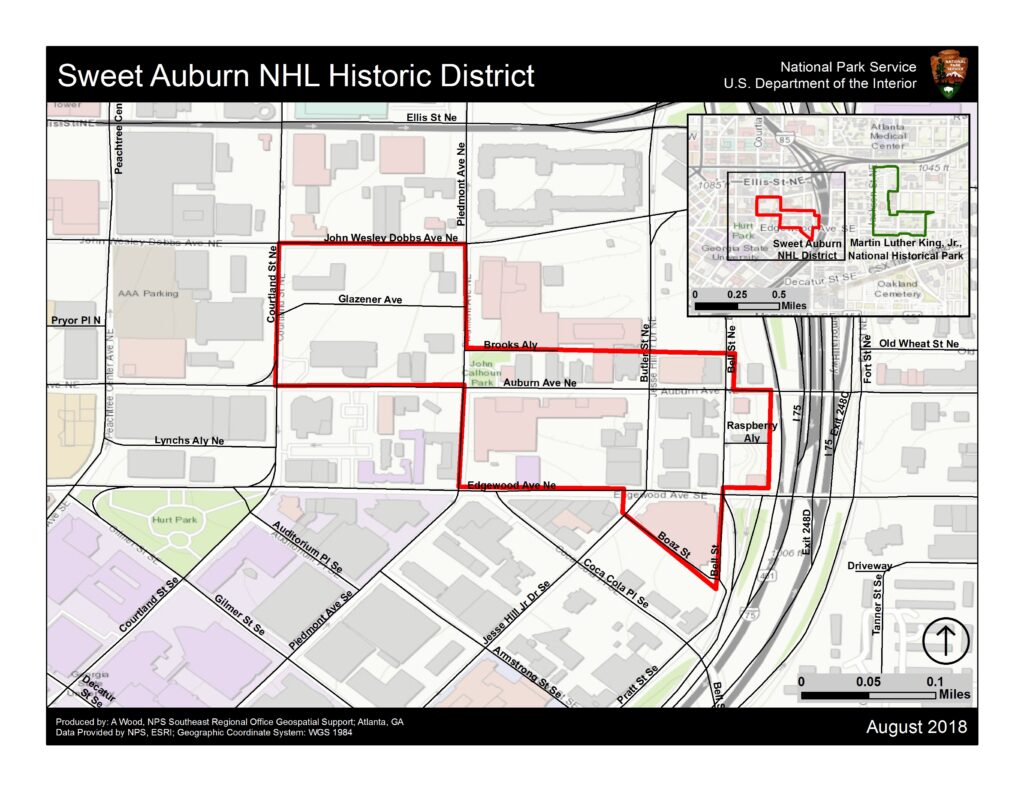Sweet Auburn, a historic district in Atlanta, was the commercial, cultural, and spiritual heart of the African American community in the late 19th and early 20th centuries, serving as a hub for Black businesses, congregations, and social organizations.
By the 1920s-1940s, it became known as the “richest Black street in the world” with Black-owned banks, insurers, and the Atlanta Daily World newspaper. The neighborhood gained global significance as the birthplace of Martin Luther King Jr., housing his childhood home and Ebenezer Baptist Church. Urban renewal projects and highway construction in the 1950s-60s fractured the community, leading to decline. Designated a National Historic Landmark in 1976, preservation efforts saved key landmarks like the Royal Peacock Club and Big Bethel AME Church. Today, Sweet Auburn’s revitalization balances its civil rights legacy with new development, anchored by the Martin Luther King Jr. National Historical Park.
Featured Project | Digital Projects | Articles | Further Reading
Project by Eriss Weiss

Sweet Auburn was given the name by John Wesley Dobbs, who was treated as Auburn Avenue’s unofficial mayor.” Auburn Avenue was Sweet Auburn’s commercial district and contained the social, political, and religious institutions that allowed Atlanta’s Black community to thrive on the street and give them a place in Atlanta. [1] Auburn Avenue was said to be the Main Street of the African American community in Atlanta.
This project revisits a century of racialized urban development in Atlanta.
This project is a self-guided tour in the Sweet Auburn neighborhood.
Sweet Auburn Works
This is the National Park Services boundary map of Sweet Auburn. How does this map trace Black populations today?
